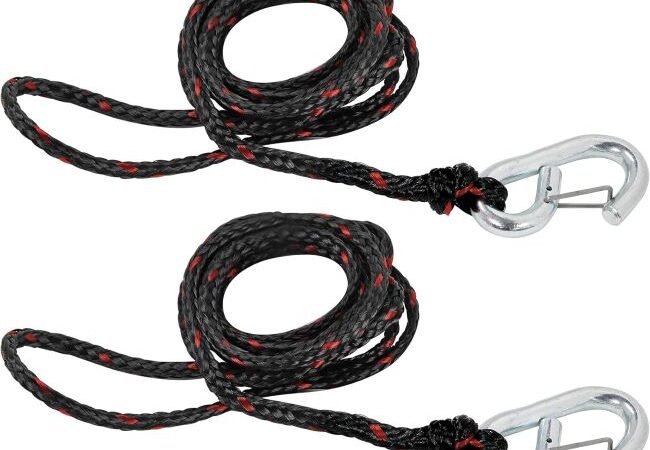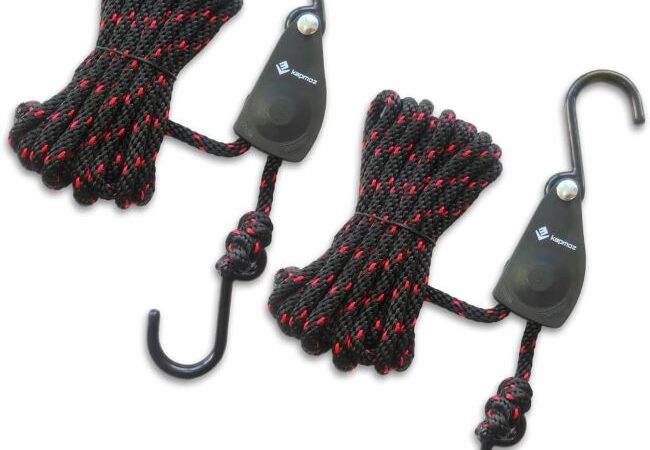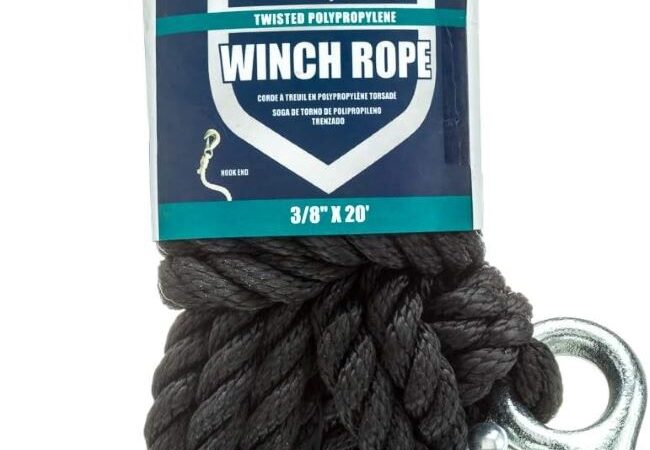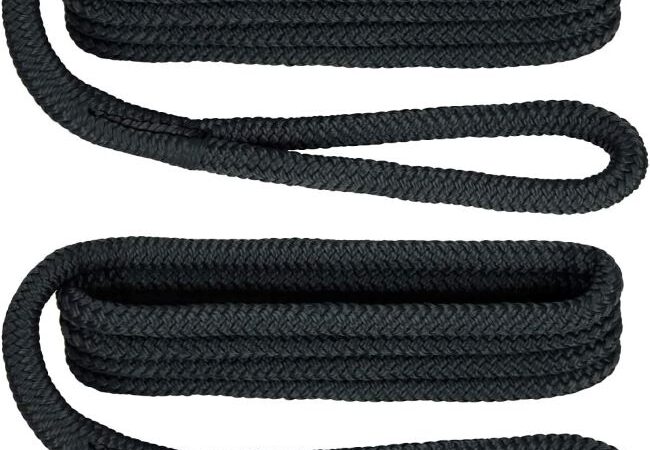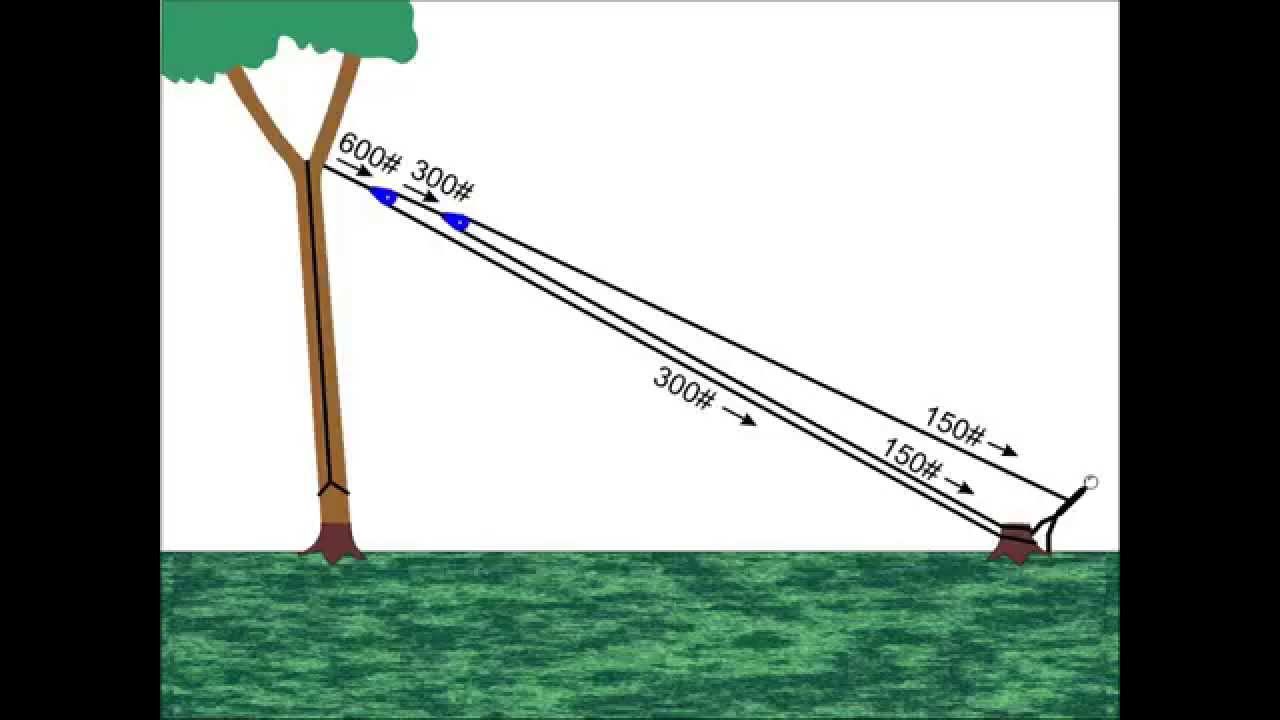
Rope to Pull Down Trees: Your Ultimate Guide
A rope to pull down trees is essential for controlled tree removal. It ensures safety and efficiency during the process.
Contents at a Glance
ToggleTackling the task of tree removal requires the right equipment; a rope designed for pulling down trees is a key component. This specialized rope is strong enough to handle the weight and tension needed to bring a tree down in a specific direction.
It allows for the application of force at a safe distance, minimizing the risk of injury. Tree felling is a dangerous activity, and using the appropriate rope is part of the necessary precautions professionals take. Whether you’re a homeowner managing your property or a professional arborist, understanding the importance of a high-quality rope for tree pulling is crucial. It’s not just about having any rope; it’s about having the right rope that can withstand the demands of the job and protect all involved in the tree removal process.

Credit: www.youtube.com
Introduction To Tree Pulling Techniques
Tree pulling is an effective method for tree removal. Essential tools include ropes, chains, and winches. These tools apply force to ensure a safe and controlled tree descent. Proper technique is crucial in avoiding damage to surrounding property.
Safety gear is a must for protection during tree pulling. This includes helmets, gloves, eye protection, and steel-toe boots. Always check local guidelines for additional safety requirements. Before starting, clear the area to prevent accidents.
| Precaution | Gear |
|---|---|
| Wear a helmet | Helmet with face shield |
| Use protective gloves | Heavy-duty gloves |
| Protect your eyes | Safety goggles |
| Secure your feet | Steel-toe boots |
Rope Selection For Tree Pulling
Selecting the right rope for tree pulling is crucial. Material strength, diameter, and flexibility are vital factors. Commonly used ropes include polyester, nylon, and polypropylene. Each type has distinct properties.
Polyester ropes resist weather well. They don’t stretch much, making them reliable. Nylon ropes are very strong. They can stretch to absorb shocks. Polypropylene ropes are lightweight. They float and are good for wet conditions.
| Type | Strength | Stretch | Weather Resistance |
|---|---|---|---|
| Polyester | High | Low | Excellent |
| Nylon | Very High | High | Good |
| Polypropylene | Moderate | Low | Fair |
Rope diameter affects handling and strength. Thicker ropes bear more weight. They are harder to knot. Choose a rope that suits your task’s needs.
Knots And Hitches For Tree Pulling
Mastering certain knots and hitches is crucial for safely pulling down trees. The Bowline knot creates a secure loop that won’t tighten under strain. The Running Bowline offers a noose that can be easily placed around the tree. For added grip, a Clove Hitch provides a quick and simple solution. Each knot offers unique benefits for tree pulling tasks.
Securing the tree before pulling is paramount. Use sturdy ropes and check for wear and tear to ensure safety. A Trucker’s Hitch allows for tension adjustments, which is vital for control. It’s also important to clear the area to prevent accidents. Always wear safety gear and work with a team.
| Knot | Use |
|---|---|
| Bowline | Secure loop |
| Running Bowline | Noose for easy placement |
| Clove Hitch | Quick grip |
| Trucker’s Hitch | Adjustable tension |

Credit: www.chegg.com
Mechanical Advantage Systems
Setting up a 3:1 pulley system boosts your force effectively. This arrangement multiplies your pulling power, making tree pulling easier. To set up, attach one end of the rope to the tree. Run the rope through a pulley attached higher up. Then, pull the rope from the ground. Each section of rope between pulleys does the hard work. This setup triples your force, simplifying tree removal tasks.
Anchoring Methods For Pulling Trees
Choosing the right anchor point is crucial for safety and efficiency in pulling down trees. The anchor point must be sturdy and able to withstand the force of the pull. Look for solid structures like large trees or concrete posts that are firmly rooted in the ground.
For the anchor system setup, use appropriate ropes and gear. Ensure all components can handle the estimated force exerted during the operation. Secure connections are vital to prevent any slip or failure. Always double-check the setup before proceeding.
| Step | Action |
|---|---|
| 1 | Identify a robust anchor point |
| 2 | Prepare heavy-duty ropes and gear |
| 3 | Connect ropes to the anchor point |
| 4 | Test setup for stability and strength |

Credit: thesprucetunnel.wordpress.com
Directional Felling Techniques
Directional felling is a precise tree removal method. Planning the fall path is vital to ensure safety and accuracy. Assess the tree and surroundings to identify potential hazards. Consider wind direction and natural lean of the tree.
Using wedges and ropes aids in controlling the fall. Secure ropes at a high point on the tree. This method provides additional leverage. Wedges can steer the tree during the cut. They also prevent the saw from binding.
| Tool | Function |
|---|---|
| Ropes | Control and guide fall |
| Wedges | Direct tree and prevent binding |
Post-pull Clean Up And Disposal
After pulling down a tree, dealing with the remains is crucial. Chop the wood into smaller pieces for easier handling. You can use these for firewood or creative projects. Recycle the leaves and smaller branches by turning them into mulch for your garden.
For eco-friendly disposal, consider options like composting. Composting helps reduce waste and enriches the soil. Contact local recycling centers to see if they accept tree remains. Some centers convert wood into reusable materials. This supports the environment and reduces landfill waste.
Legal And Environmental Considerations
Understanding permits and regulations is essential before pulling down trees. Local authorities often require specific permits to ensure safety and legal compliance. Securing the right documentation is the first step to avoid legal issues.
Efforts to minimize ecological impact are crucial. Techniques that protect surrounding flora and fauna are highly recommended. It’s important to consider the habitat preservation of local wildlife and to employ methods that prevent soil erosion.
Advanced Tree Pulling Tactics
Working with large trees requires specific techniques and tools. Experts often employ ropes and mechanical advantage systems to manage the task safely. Ropes must be strong, with the capacity to handle the weight of large branches and trunks.
- Uneven terrain can complicate tree pulling.
- Close proximity to buildings or power lines requires careful planning.
- Weather conditions may also affect the pulling process.
Professionals may use a combination of techniques in such cases. These include directional felling and mechanical assistance. Proper gear selection is crucial for the safety of all involved.
Rope Maintenance And Care
Proper rope maintenance ensures longevity and safety. Regularly clean your rope to remove dirt, debris, and chemicals that can weaken the fibers. Use mild soap and water for cleaning, and avoid harsh chemicals. After washing, dry the rope completely before storage to prevent mildew and rot. Store ropes in a cool, dry place away from direct sunlight, as UV rays can degrade the material over time.
Inspect ropes before and after each use for signs of wear or damage. Look for frayed strands, discoloration, or cuts that could indicate the rope is compromised. Any rope showing signs of significant wear should be retired from use to ensure safety. Consistent inspection helps prevent rope failure during critical moments.
Case Studies
Successful Tree Removal Projects showcase innovative strategies for safe and efficient tree management. Expert teams meticulously plan each operation. They ensure minimal impact to the surrounding environment. Through these efforts, impressive results are achieved, demonstrating the effectiveness of rope techniques.
Several case studies highlight the precision and control ropes offer. One project in particular stands out. A large oak, threatening a nearby structure, was successfully felled. The team used a complex pulley system. This approach maximized safety and minimized disruption.
Learning from Failures is equally crucial. Teams draw valuable lessons from each setback. They adapt their methods. Every challenge provides insight, improving future outcomes. These experiences contribute to advancing tree removal techniques.
Concluding Thoughts On Rope Tree Pulling
Rope tree pulling is an effective technique. It requires strong, durable ropes. Users should wear safety gear. Proper training ensures successful tree pulling. Arborists often share tips and tricks. Online forums provide a wealth of information. Workshops offer hands-on experience. It’s crucial to stay updated on best practices.
Learning from experienced professionals is beneficial. They teach rope handling techniques. Many online courses are available. They cover tree pulling methods. Local community colleges might offer related classes. Resource books can also be useful. Practice improves skill and safety.
Frequently Asked Questions
What Is The Best Rope To Pull A Tree Down With?
The best rope for pulling a tree down is a polyester or nylon arborist rope, known for its strength, durability, and elasticity.
What Rope Is Used To Pull Down Tree Limbs?
For pulling down tree limbs, arborists commonly use static ropes due to their minimal stretch and strong load-bearing capacity. These ropes ensure safety and efficiency during tree maintenance tasks.
What Is The Best Rope For Pulling?
The best rope for pulling is typically a synthetic fiber rope like polyester or nylon due to their strength, durability, and stretch resistance.
What Is The Best Rope For Pulling Logs?
The best rope for pulling logs is a polyester or polypropylene rope due to their strength, durability, and resistance to abrasion.
Conclusion
Choosing the right rope to pull down trees is crucial for safety and efficiency. Ensure it meets the required strength and durability standards. With the proper tools and techniques, you can tackle this task confidently. Always prioritize safety and consider professional advice for the best results.
Happy tree removal!


